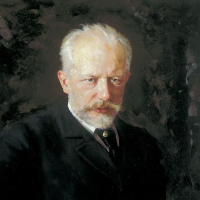

Peter Iljitsch Tschaikowsky
Romeo and Juliet
Short instrumentation: 1 1 1 1 - 1 0 0 0, pno, str
Duration: 20'
Bearbeitet von: Luukas Hiltunen
Instrumentation details:
flute
oboe (+c.a)
clarinet in A
bassoon
horn in F
piano
violin I (6 players)
violin II (6 players)
viola (5 players)
violoncello (4 players)
double bass (2 players)
Romeo and Juliet
Printed/Digital
Translation, reprints and more

Peter Iljitsch Tschaikowsky
Romeo and JulietType: Dirigierpartitur
Sample pages
Work introduction
In the summer of 1869, when Pyotr Ilyich Tchaikovsky (1840–1893) was a 28-year-old professor of composition and music perception at the Moscow Conservatory, he met the composer-pianist-conductor Mily Balakirev (1836–1910) in Moscow. During the meeting, Balakirev suggested that Tchaikovsky should compose an orchestral overture based on William Shakespeare's (1564–1616) tragedy Romeo and Juliet (c. 1594). The composition proved challenging, not least because of Balakirev's displeasure, which led Tchaikovsky to revise the overture in the summer of 1870 while staying in Switzerland. The world premiere of the first version in March 1870 met with a mixed reception: on the one hand, the love theme in D flat major was “adored by everyone present”, as Balakirev stated in a letter to Tchaikovsky, and on the other, Tchaikovsky himself wrote to his friend Ivan Klimenko (1839–1914) that “the overture was barely noticed here”. The third version is dated to August 1880 in Kamenka – the home of the composer's sister Aleksandra Davudova (1842–1891), where Tchaikovsky visited regularly – to ensure a flourishing distribution. The third version is also the one that has established itself in the concert programmes and recordings, whereas the two earlier versions are merely interesting curiosities.
The present version for chamber orchestra, prepared by our composer Luukas Hiltunen by commission of the Chamber Orchestra of Lapland, the first of its kind, is based on this 1880 revision.
